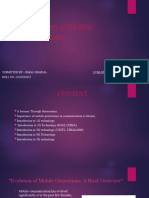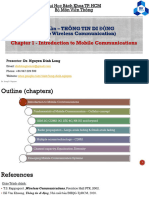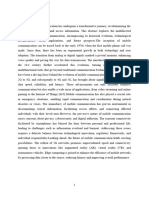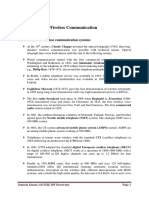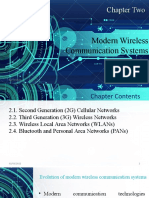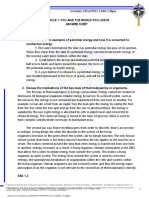0% found this document useful (0 votes)
64 views17 pagesNCC 314 Lecture Note
The document provides an overview of wireless communication systems, detailing their components, types, and principles, including mobile communication and WLANs. It discusses the evolution of mobile communication through various generations, from 1G to 5G, highlighting advancements in technology and standards. Additionally, it covers radio wave propagation, factors affecting it, and the significance of WLANs in modern connectivity.
Uploaded by
nsikanekpefiongCopyright
© © All Rights Reserved
We take content rights seriously. If you suspect this is your content, claim it here.
Available Formats
Download as PDF, TXT or read online on Scribd
0% found this document useful (0 votes)
64 views17 pagesNCC 314 Lecture Note
The document provides an overview of wireless communication systems, detailing their components, types, and principles, including mobile communication and WLANs. It discusses the evolution of mobile communication through various generations, from 1G to 5G, highlighting advancements in technology and standards. Additionally, it covers radio wave propagation, factors affecting it, and the significance of WLANs in modern connectivity.
Uploaded by
nsikanekpefiongCopyright
© © All Rights Reserved
We take content rights seriously. If you suspect this is your content, claim it here.
Available Formats
Download as PDF, TXT or read online on Scribd
/ 17






